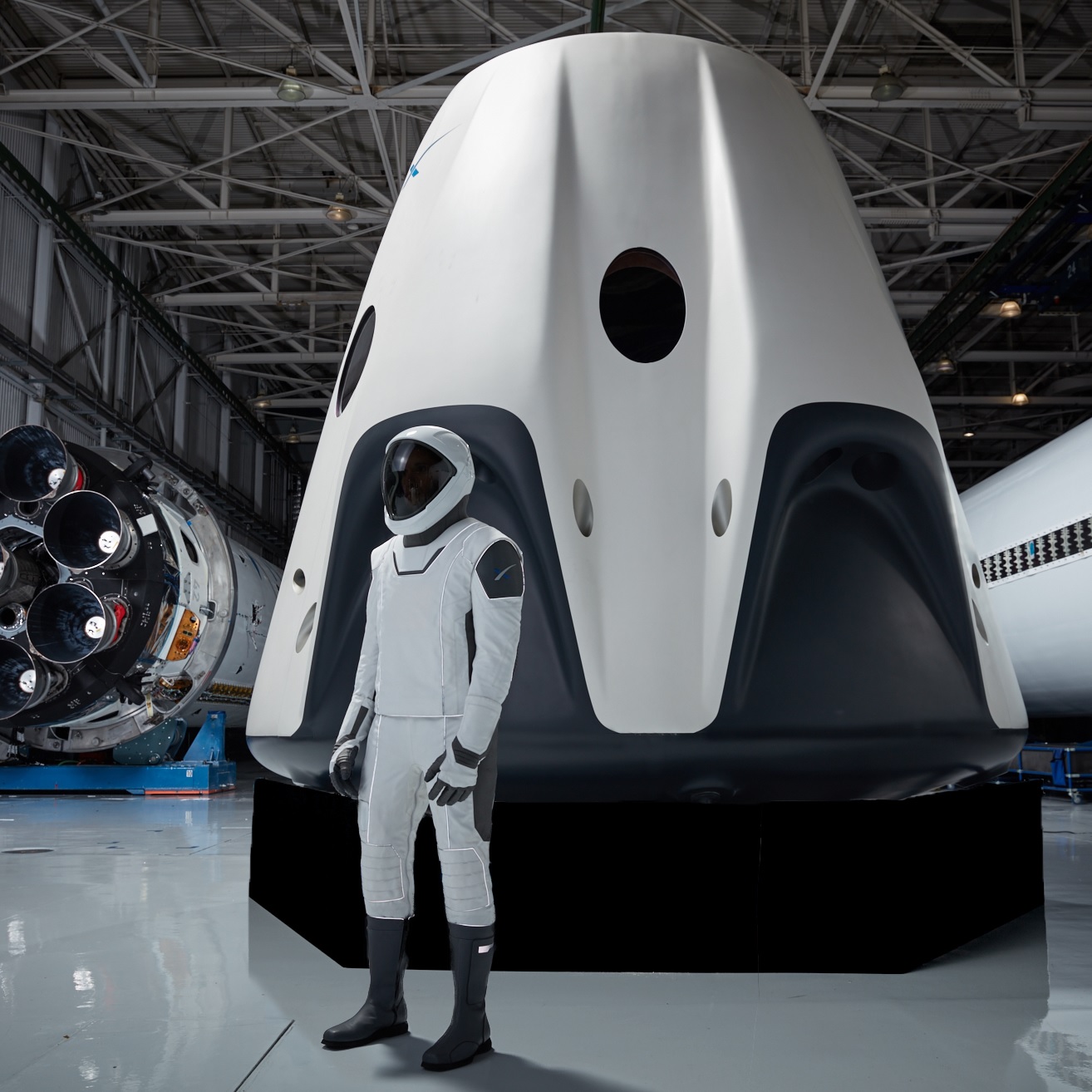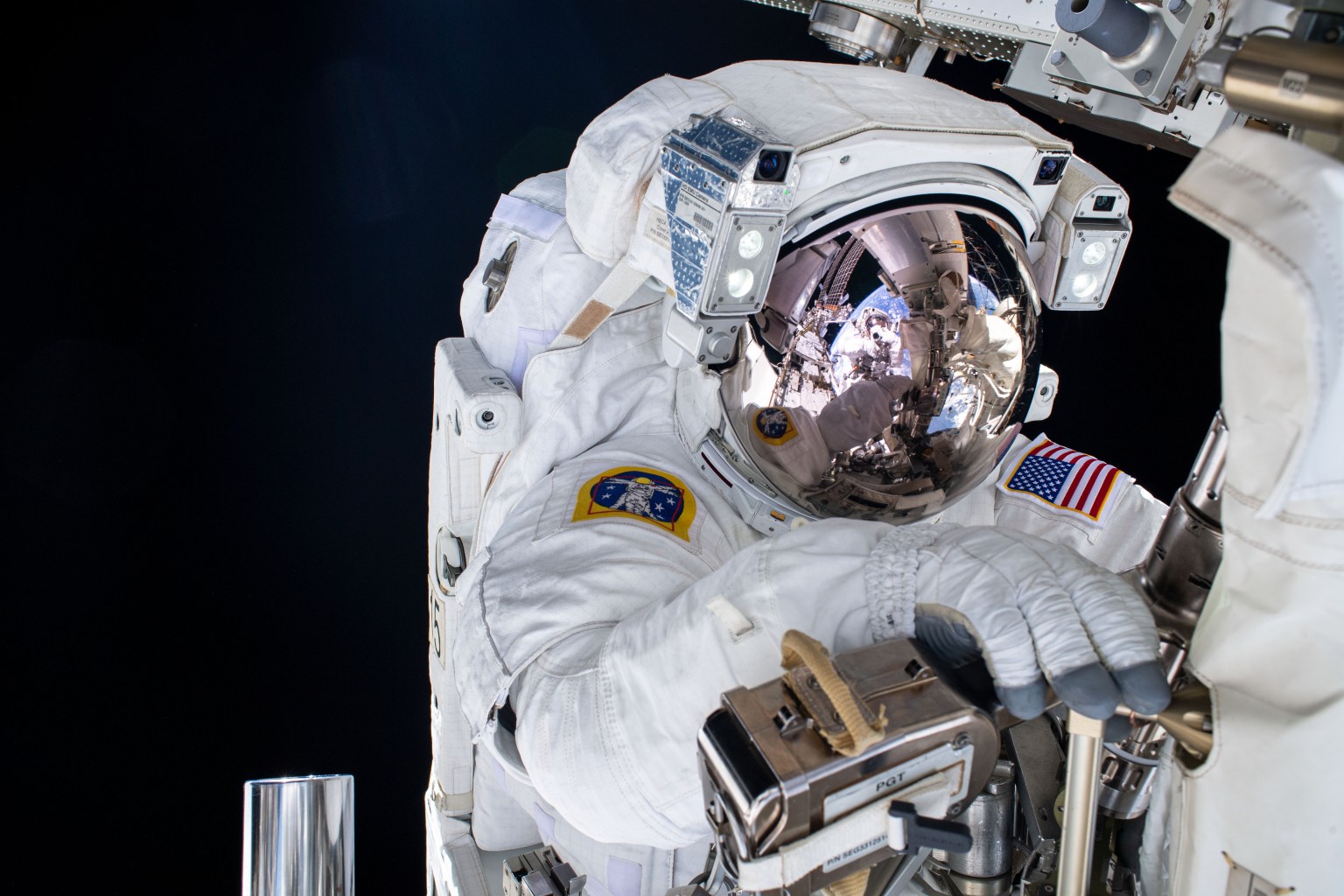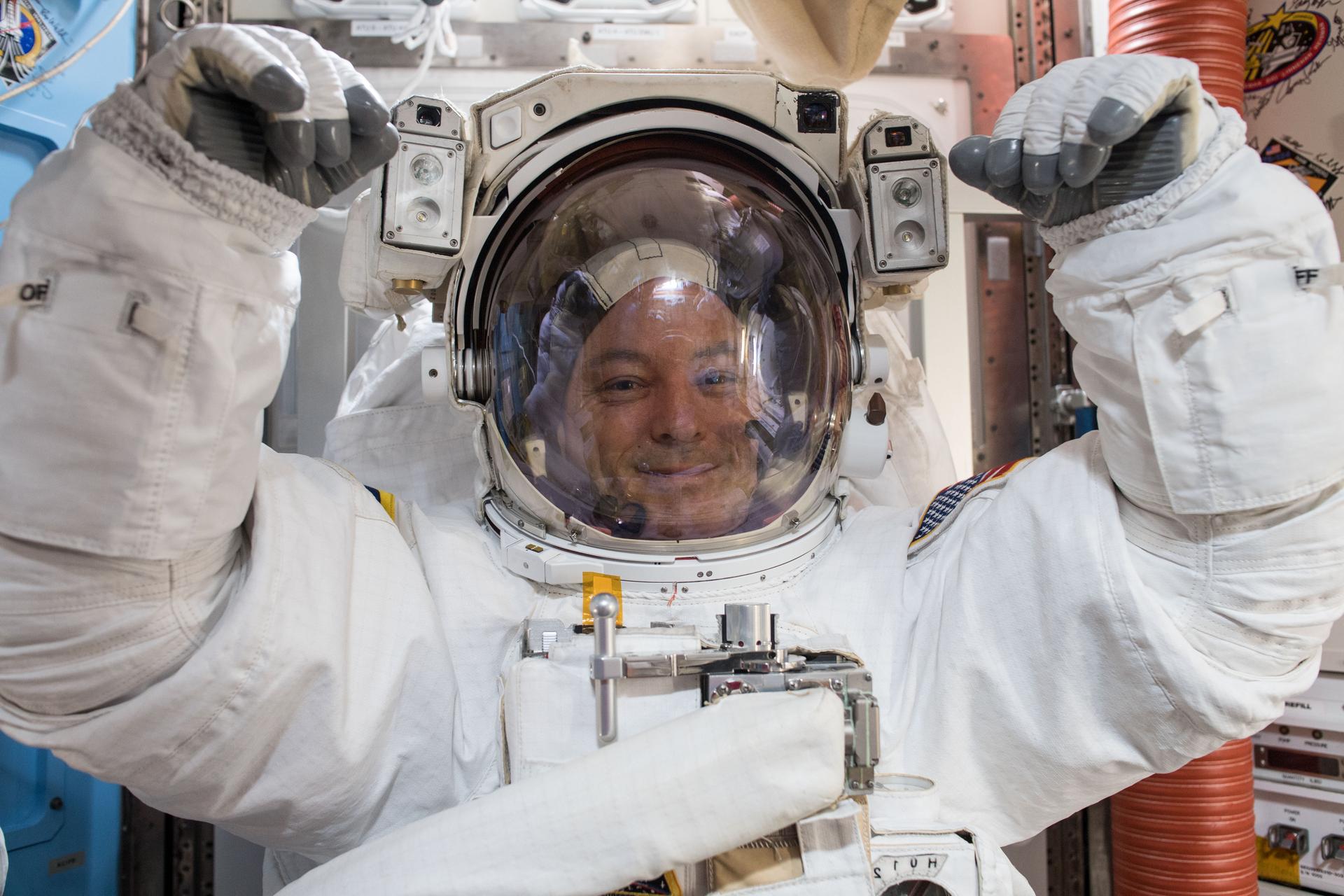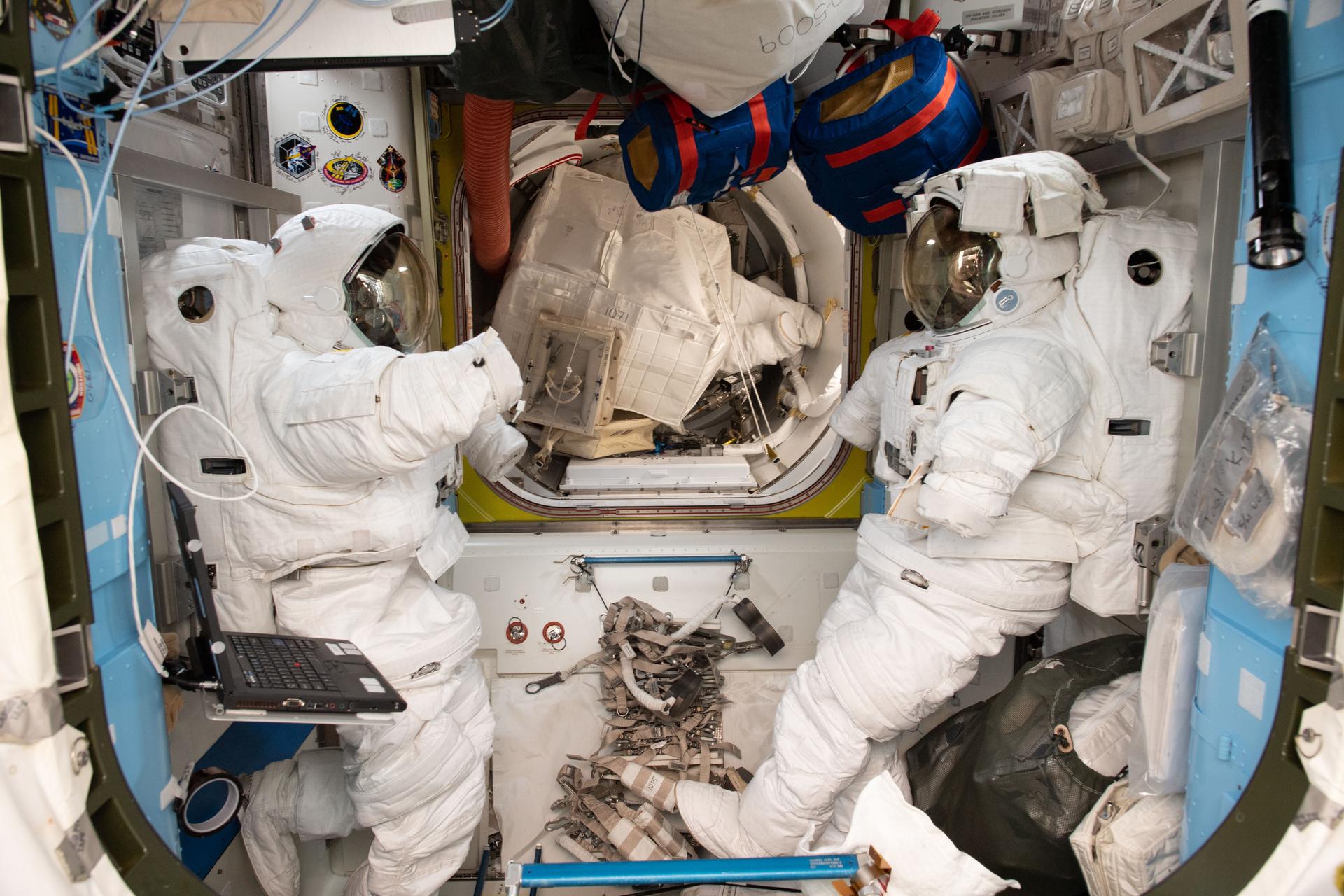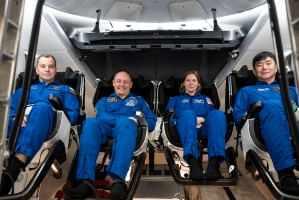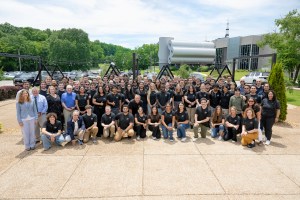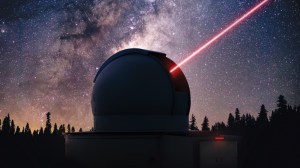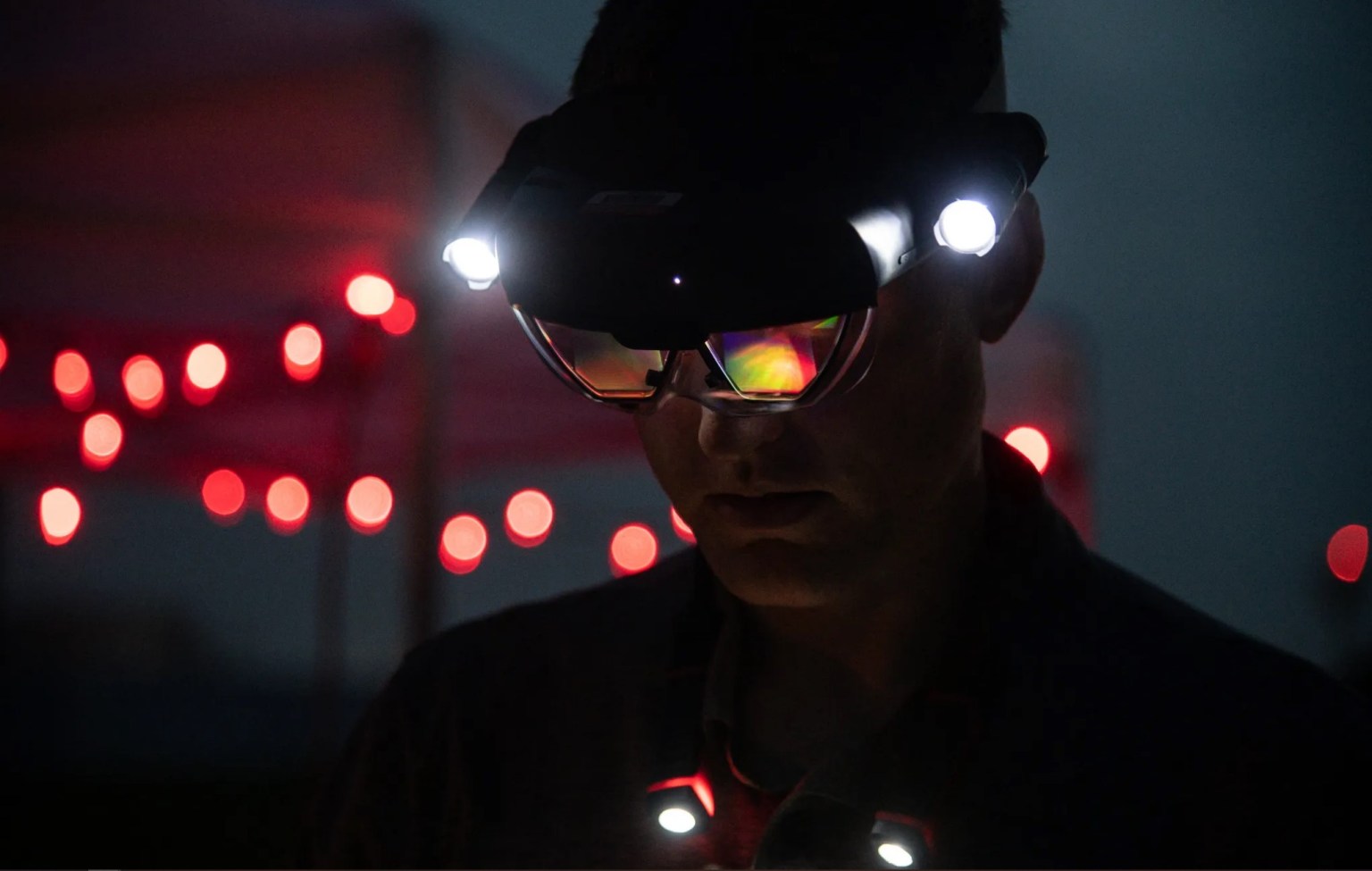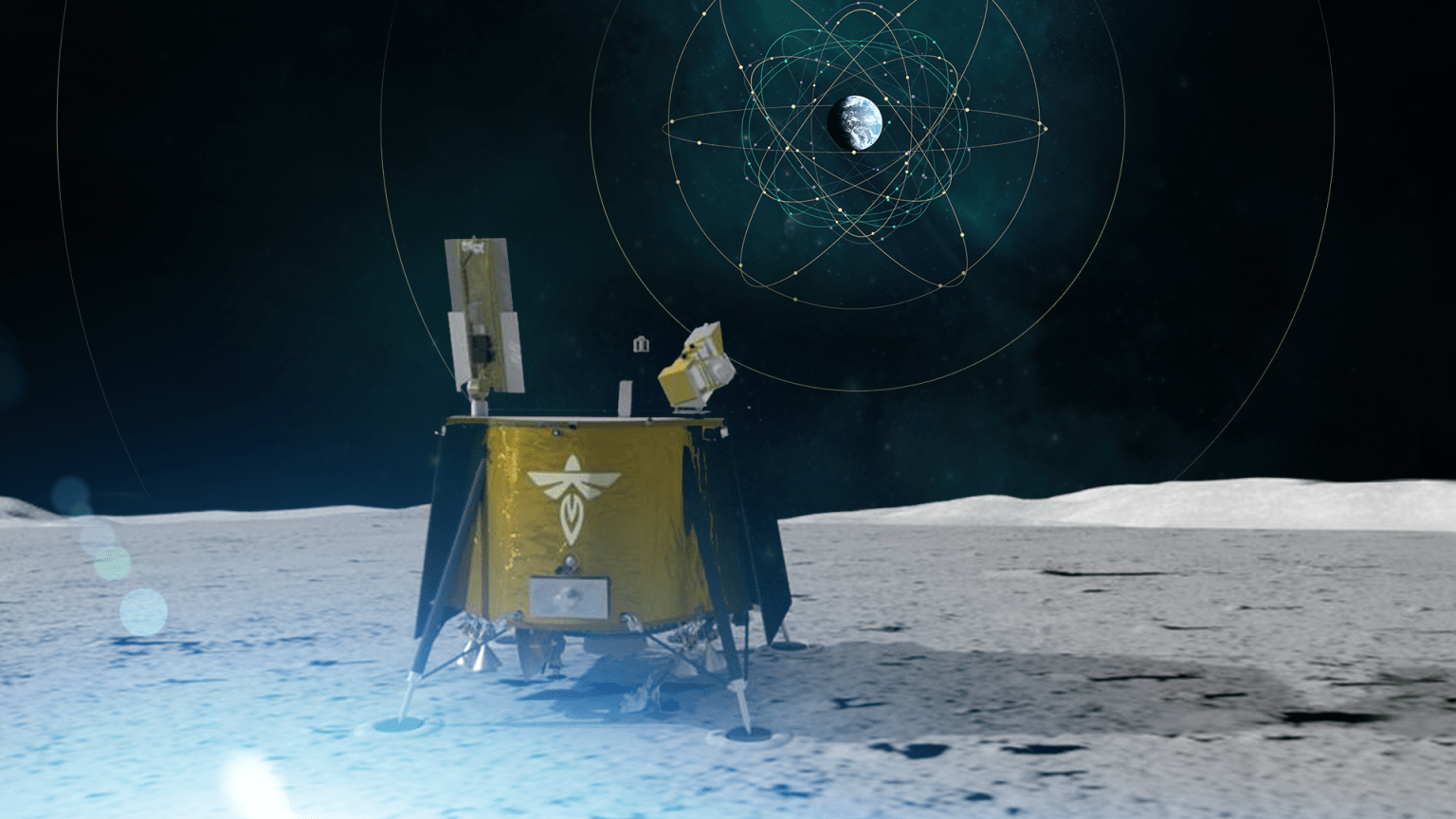A spacesuit is much more than a set of clothes astronauts wear on spacewalks. A fully equipped spacesuit is really a one-person spacecraft. The formal name for the spacesuit used on the space shuttle and International Space Station is the Extravehicular Mobility Unit, or EMU. “Extravehicular” means outside of the vehicle, or spacecraft. “Mobility” means that the astronaut can move around in the suit. The spacesuit protects the astronaut from the dangers of being outside in space.
Why Do Astronauts Need Spacesuits?
Spacesuits help astronauts in many ways. The suits protect astronauts from getting too hot or cold and also give astronauts oxygen to breathe while they are working in space. The suits hold water to drink during spacewalks. They also keep astronauts from getting hurt by space dust. Space dust may not sound very dangerous, but when a tiny object is moving many times faster than a bullet, it can cause injury. Spacesuits also protect astronauts from radiation in space, and are equipped with special, gold-lined visors to protect astronauts’ eyes from bright sunlight.
What Are the Parts of a Spacesuit?
A spacesuit is made up of many parts. One part covers the astronaut’s chest. Another part covers the arms and connects to the gloves. The helmet protects the head. The last part covers the astronauts’ legs and feet. Some parts of the suit are made of many layers of material. Each layer does something different. Some keep oxygen in the suit while others protect astronauts from space dust.
Under the suit, astronauts wear another piece of clothing. It covers their body except for the head, hands, and feet. Tubes are woven into it. Water flows through the tubes to keep the astronaut cool.
On the back of the spacesuit is a backpack. The backpack holds oxygen so astronauts can breathe, and also removes carbon dioxide that astronauts breathe out. The backpack supplies electricity for the suit, while a fan moves the oxygen through the spacesuit. A water tank holds the cooling water.
Connected to the back of the suit is a tool called SAFER. SAFER has several small thruster jets. If an astronaut floats away from the space station, they could use SAFER to fly back.
What Other Spacesuits Have Astronauts Worn?
NASA’s first spacesuits were developed for the Mercury program. Mercury was the first program in which NASA astronauts flew into space. These simple suits were based on pressure suits worn by U.S. Navy pilots. Astronauts did not go on spacewalks then, and the Mercury suits were worn only inside the spacecraft.
NASA’s first spacewalks took place during the Gemini program. The suits used for Gemini were more advanced than the Mercury suits; however, Gemini suits were simpler than today’s spacesuits. These suits did not contain their own life support. Instead, they connected to life-support systems on the Gemini spacecraft with a cord called an umbilical.
Spacesuits designed for the Apollo program had to do things the first suits did not. These spacesuits had to protect astronauts walking on the Moon. And, unlike the other suits, the Apollo suits had boots made to walk on a rocky surface. The Apollo suits also contained a life support system, similar to the Portable Life Support Subsystem on the current suit. Having a life support system on the spacesuit allowed the astronauts to explore away from the lunar lander.
Spacesuits similar to the Apollo suits were used on the Skylab space station. Like the Gemini suits, the Skylab suits connected to life support systems on the spacecraft via an umbilical.
What Spacesuits Are Worn Today?
In addition to the EMU, NASA astronauts wear other suits today. The Advanced Crew Escape Suit is the orange suit that astronauts wear during launches and landings. This suit cannot be worn during spacewalks. Sometimes, NASA astronauts will wear the Russian Orlan spacesuit. This suit is the Russian version of the EMU and is used for spacewalks. Another Russian suit is the Sokol. Like the Advanced Crew Escape Suit, the Sokol is designed only to be used inside a spacecraft. It is used on the Russian Soyuz spacecraft.
What Will Future Spacesuits Be Like?
Today, NASA is working on designing new spacesuits. NASA is planning missions that will send astronauts to other worlds. To do that, the astronauts will need new and improved spacesuits. Like the spacesuits used in Apollo, the new spacesuits will have to let astronauts work safely on the surface of another world.
Technology has come a long way since the time of Apollo. The new suits will allow astronauts to do things that the Apollo suits could not. They will let astronauts move more freely, making it easier to work. The suits will be more abrasion-resistant to protect from potential damage by rough surface dust.
NASA is looking at what will be needed on spacesuits for trips to Mars. Exploring Mars will involve new challenges. Unlike Earth orbit or the Moon, Mars has its own atmosphere. Mars also has more gravity than the Moon, so the suits worn on Mars cannot add too much additional weight.
